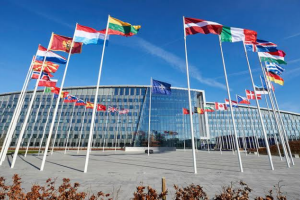His body glistening with sweat, a gaunt man in a loincloth pulls a rickshaw through the serpentine lanes of north Kolkata. Amidst the wilting summer heat, the towering brick-red dwellings with baroque cornices overlook his toil. Plying people or packages, this man is a symbol of an enduring legacy in the “city of joy”, a platitudinous nickname it earned from French author Dominique Lapierre’s novel. Despite Kolkata’s strides towards modernity, the sight of hand-pulled rickshaws continues to define its streetscape.
Talking to The Statesman, Mukhtar Ali, general secretary of All Bengal Rickshaw Union, says, “There are about 3,500 hand-pulled rickshaws today,” which is a significant decline from the 6,000 that plied the streets in 1919.
Advertisement
Hand-pulled rickshaws were invented in Japan in 1869, with the term ‘rickshaw’ derived from the Japanese word ‘jin-riki-sha’, meaning human-powered vehicle. The British introduced these rickshaws to Kolkata, replacing the ornate palanquins used by the aristocracy, including landlords and businessmen. This shift reinforced the colonial master-slave power dynamics, as it involved one human manually pulling another. In 1919, the British enacted the Calcutta Hackney Carriage Act, which authorised the use of hand-pulled rickshaws for passenger transport in Kolkata. These rickshaws thus became the bourgeois alternative to palanquins. Despite the decline of British colonialism in India after World War II, hand-drawn rickshaws remain a lasting legacy in the city.
Advertisement
Despite efforts to phase them out, hand-pulled rickshaws continue to survive due to their simplicity and the ease with which unskilled labourers can operate them. Many pullers are seasonal migrants from Bihar and Jharkhand, turning to this work when their farmlands lie fallow. These pullers typically rent their rickshaws from sardars, owners who run rickshaw garages or khatals. The government has ceased issuing new licences or renewing old ones, aiming to phase out these relics of a bygone era.
Kamal Ali, a hand-drawn rickshaw puller, shares his plight: “It’s difficult to get by with a monthly earning of not more than 3,000 rupees. If our rickshaws are banned, I shall not survive. I’m illiterate. I have two sons and three daughters. My sons have moved to another city with their wives, and barely visit. My daughters are married.”
“Every day is a battle against exhaustion and uncertainty,” says Rajan Kumar, another rickshaw puller. “Pulling a rickshaw in the scorching heat or pouring rain, I dream of a life where my family won’t have to endure any hardship. The future is always on my mind, but the present is all-consuming. Despite the challenges, I take pride in my work. In places where other forms of transport can’t reach, my rickshaw can navigate effortlessly. Whether it’s ferrying people through narrow lanes or delivering packages to hard-to-reach areas, I know my work is essential to the city’s daily life. It’s this sense of purpose that keeps me going.”
The erstwhile West Bengal government, under the Left Front, attempted to ban hand-pulled rickshaws in 2006, citing human dignity concerns. The proposed Calcutta Hackney-Carriage (Amendment) Bill aimed to phase them out, but implementation has been slow. Talks of replacing these rickshaws with battery-operated versions have surfaced but remain unrealised.
GS Mukhtar Ali, acknowledging the stagnation, says, “We have discussed our concerns with chief minister Mamata Banerjee. Prior to the elections, we sent her a letter, which she promptly forwarded to the transport minister. He has assured us that he will address our issues after the elections. In the meantime, we are drafting a letter outlining our demands for rehabilitation packages.”
A report by The Calcutta Samaritans and Action Aid reveals the harsh realities of the rickshaw pullers’ lives. About 76 per cent of them work over 12 hours a day without access to adequate healthcare. Prolonged isolation from families leads to loneliness, and many turn to sex workers, increasing the risk of STDs like HIV/AIDS. The report further reveals that 27 per cent of them suffer from stomach upset, 27.9 per cent from hydrosil, 26 per cent from malaria, 14 per cent from tuberculosis, 13.2 per cent from spine-related issues, 4.4 per cent from cough and cold, 30 per cent from joint pain, and 5.7 per cent from STDs.
Despite the grim conditions, these rickshaws have one redeeming feature: they are eco-friendly. Unlike motorised vehicles, they don’t rely on fuel, making them a green mode of transport. Their small size allows them to navigate the narrow lanes of Kolkata, especially useful during the monsoon season when many streets are flooded.
The hand-pulled rickshaws of Kolkata embody a complex blend of history, struggle and pliability. These vehicles, once symbols of colonial power dynamics, have become an integral part of the city’s fabric, providing essential services where modern transportation falls short. As the city strides towards modernisation, the need for a compassionate and sustainable transition becomes imperative. Ensuring the dignity and livelihood of these workers through thoughtful rehabilitation packages and alternative employment opportunities is not just a moral obligation but a necessary step towards an inclusive future. In a city that prides itself on its rich heritage and progressive strides, the plight of the rickshaw pullers is a call to bridge the gap between the past and the future, ensuring that no one is left behind in the march of progress.
Advertisement











